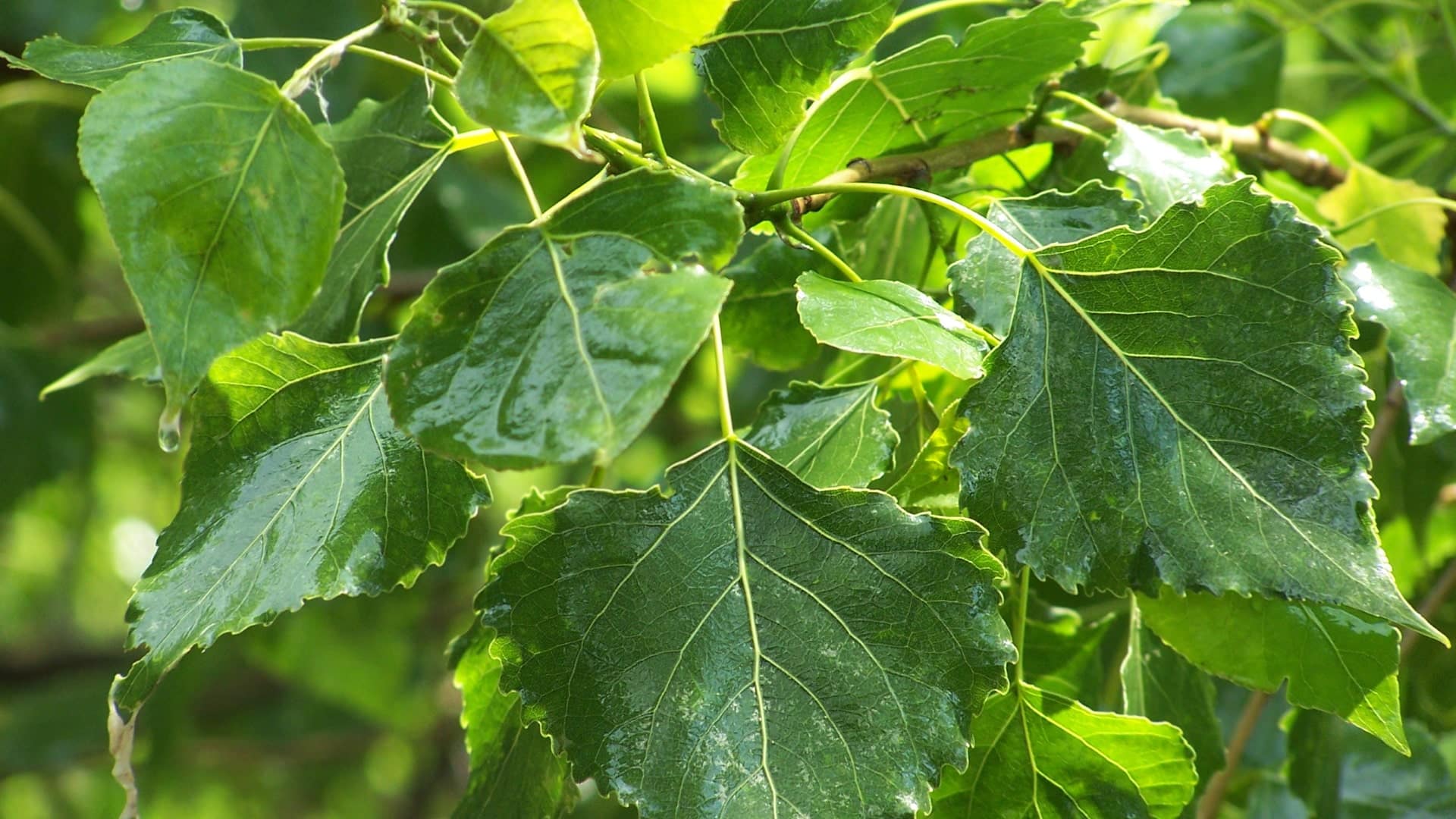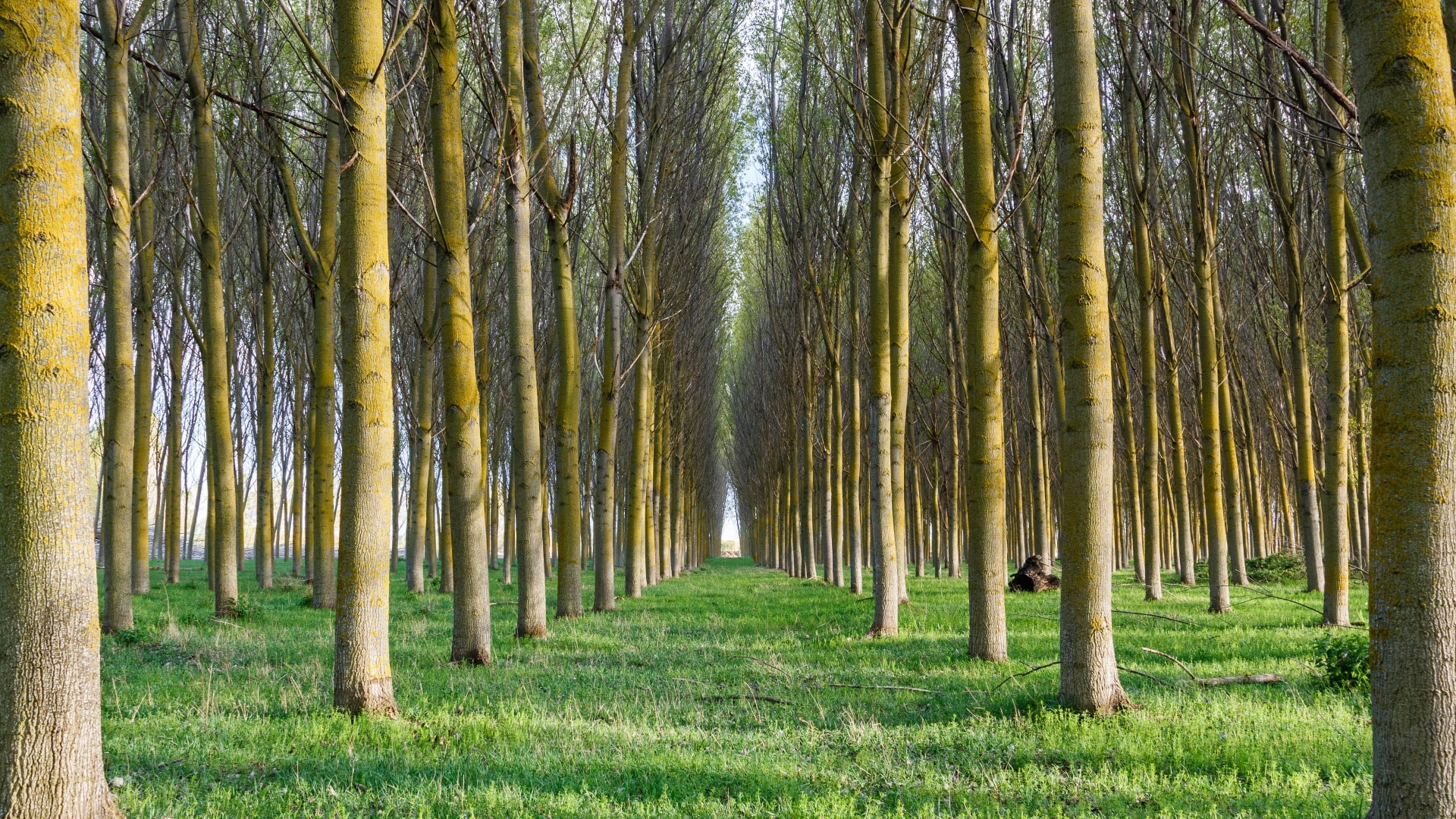Poplar
Populus spp
P. nigra, P. deltoides, P. maximowiczii and P. trichocarpa, P. tremula
General info
Poplar (Populus spp.) belong to the family Salicaeae and are native to the Northern hemisphere. Poplar is among the fastest growing of temperate trees and is therefore of considerable interest as a bioenergy crop.The plant grows to a height of 15–50m with a trunk diameter of 2.5m. Once established, poplar can beharvested every 2-5 years over a life span of over 20 years. Poplar is a multipurpose crop with several environmental benefits such as reducing erosion, phytoremediation of contaminated soils, windbreaks, and biodiversity.
Cultivation and agronomy
Poplar is suited to most soil types including clay, sand, loam, and humus soils. It grows particularly well on well drained and fertile loam with a wide range pH of 5-8. Poplar can be grown as a Short Rotation Forestry(SRF) or Short Rotation Coppice (SRC). The plant can grow up to about 1.5m in height during the first yearand from 3-5m for each of the following years depending on the cultivar, site conditions, spacing andmanagement practices. For large scale plantations, it is recommended to plant mixtures of poplar varieties with about 100 trees of a single cultivar in each block, and different cultivars in neighbouring blocks.
If considering mechanised harvesting, plant at a spacing of 0.6m apart in twin rows with 0.75m between rowsand a 1.5m alley between each twin-row. Poplar can be planted in densities of 1,500 up to 1,800 trees per hectare for bioenergy purposes. Yields of 20-25m3 of wood/ha/yr is achievable in the UK. Young growth is attractive to deer, hare, and rabbits. Appropriate fencing may be required in areas where these animals areprevalent. Common pests includes the small poplar leaf beetle (Phratora vitellinae), and the large leaf beetle (Chrysomela populi).
Return to crops overview
Relevant research
Clifton‐Brown, J., Harfouche, A., Casler, M. D., Dylan Jones, H., Macalpine, W. J., Murphy‐Bokern, D., … & Lewandowski, I. (2019). Breeding progress and preparedness for mass‐scale deployment of perennial lignocellulosic biomass crops switchgrass, miscanthus, willow and poplar. Gcb Bioenergy, 11(1), 118-151.
Biomass Connect Trials
Poplar is being grown as both SRC and SRF as part of the Biomass Connect trials at the following hub sites:
- AFBI Hillsborough
- BGI Chesham
- IBERS Aberystwyth
- NIAB Headley Hall
- Newcastle University Cockle Park Farm
- Rothamsted Research North Wyke
- SRUC Ayrshire
- SRUC Edinburgh
For the Biomass Connect SRF Trials, we planted 3 varieties:
- A4A (P. deltoides × P. nigra) Italian (Female)
- AF7 (Populus ?) Italian (Male) Unsure of this pedigree
- Vesten (Populus deltoides × Populus nigra) Belgian (Female)
For the Biomass Connect SRC Trials, we planted 6 varieties:
- A4A (P. deltoides × P. nigra) Italian (Female)
- AF7 (Populus ?) Italian (Male) Unsure of this pedigree
- Vesten (P. deltoides × P. nigra) Belgian (Female)
- AF2 (P. deltoides × P. nigra) Italian (Male)
- Muur (P. deltoides × P. nigra) Belgian (Male)
- Oudenburg (P. deltoides × P. nigra) Belgian (Female)

